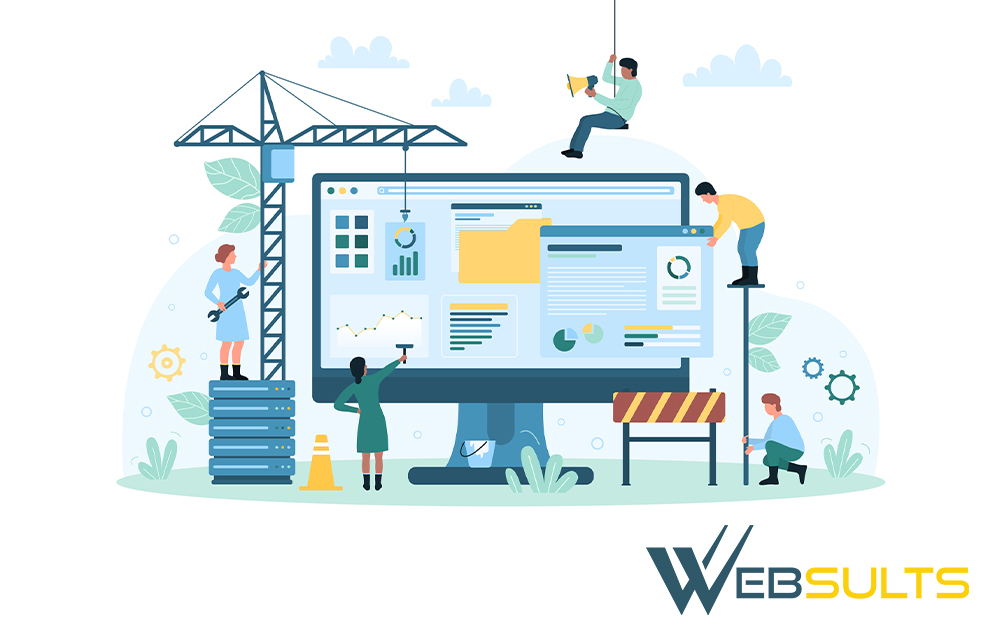Building a website is only the first step. Understanding WordPress maintenance is essential to keep your site secure, fast, and fully functional.
Whether you’ve recently had a WordPress website built or are just starting, following the right maintenance procedures is key to keeping your website performing at its best. WordPress maintenance goes beyond updating content – it includes regular tasks like software updates, backups, and security monitoring. By following these routines, you ensure optimal performance, strong security, and a positive experience for your visitors.
In this guide, we’ll explore the purpose of WordPress maintenance, outline essential tasks, and discuss when it might be beneficial to hire a professional.
What is WordPress Maintenance?
According to WordPress.org, regular maintenance helps prevent hacks, downtime, and performance issues. WordPress maintenance involves consistently performing tasks that keep your website running smoothly, secure, and up to date. Although it may seem time-consuming, most routine tasks require minimal time and can save major headaches later.
Key WordPress maintenance tasks include:
- Updating the WordPress core, plugins, and themes
- Monitoring and improving website security with firewalls and backups
- Optimizing website speed and responsiveness
- Testing features and functionality to ensure everything works as expected
By staying on top of these activities, you can prevent security breaches, improve user engagement, and maintain strong SEO rankings.
Five Important WordPress Maintenance Tasks
- Software Updates: WordPress comes with a built-in system to manage updates for WordPress core, plugins, and themes. Assuming your web server is running the latest version of PHP, you should always update WordPress to use the latest version. Don’t forget to periodically update your plugins and themes to enhance your website.
- Security Checks and Monitoring: Conduct regular security audits, scans, and activity monitoring to prevent and address any potential threats. You can stay ahead of any security risks by changing your passwords and reviewing your site’s error logs to spot any unusual activity on your site.
- Backup and Restore: Out of all of the essential WordPress plugins, a backup plugin stands out as one of the most vital. You need to back up your website’s data, encompassing content, media, and databases. This backup will come in handy should you encounter data loss or other malfunctions.
- Broken Link and Error Monitoring: Be sure to consistently check for broken links, missing images, and other errors. This vigilance guarantees a seamless user experience. This task becomes particularly crucial if you own an older website – one that has existed for more than five years. Take a moment to assess your past articles that link to external websites. Some of those external links may no longer exist, potentially leading users to error pages.
- User Management: To ensure the utmost security and privacy, effectively manage user accounts, permissions, and access rights. It’s prudent to remove individuals who are no longer associated with your company or website. This way, former users can’t access your WordPress account information.
While it’s possible to perform all the tasks mentioned above, remember that they could lose their impact if your website’s content remains unchanged. In addition to prioritizing updates, backups, and security checks, don’t overlook the significance of refreshing your website’s content. Outdated content won’t fare well with search engine optimization (SEO). Your goal is to maintain a positive online presence by keeping the content current and engaging for users.
For more details on how you can improve your WordPress maintenance routine, check out the YouTube below for a great tutorial and checklist!
How Frequently Should You Do WordPress Maintenance
Maintaining your WordPress website is a task that directly impacts its performance, security, and user experience. But how often should you roll up your sleeves and dive into these maintenance activities? Well, the answer actually depends on your type of website and its level of activity. Here’s a breakdown of the ideal maintenance frequencies and the tasks associated with each:
Daily:
-
Monitor for unusual activity and security threats
-
Check for broken links and spam comments
Weekly:
-
Update WordPress core, plugins, and themes
-
Perform full website backups
-
Review site speed and performance metrics
Monthly:
-
Analyze analytics for traffic patterns and user behavior
-
Clean up unused media files
-
Verify contact forms and other interactive features
Quarterly:
-
Review security settings, including firewall and login keys
-
Update older content to ensure accuracy and relevance
-
Conduct user experience checks
Every Six Months:
-
Revisit website design and layout for usability
-
Ensure branding is consistent across pages
-
Check overall website performance and SEO
Woocommerce Maintenance
Let’s say you’ve used Woocommerce to turn your website into. While this plugin is extraordinarily helpful for your website, its maintenance is also very important. Here are some steps you can take to ensure that your Woocommerce is running smoothly:
-
Update All Software
When using Woocommerce, it’s incredibly important to maintain your website by consistently updating your software whenever a new version is released. If this becomes too much of a time-consuming task, Woocommerce also has the ability for automatic updates with Jetpack If you do enable automatic updates, then we suggest you also use Updraft to set up automatic website backups to a remote server, such as Dropbox or Google Drive. That way you can easily go back to a previous version of your website in the event that an auto-update fails or cause a website problem.
-
Backup your Site
The worst thing that can happen is for all your hard work to one day be gone because the information stored on the website vanished. Products, customers, and other vital information need to be saved should a hacker or website malfunction come in and erase those details. Make sure you’ve backed up your site regularly.
-
Consistently Check Inventory
It’s very important to make sure you’re always up-to-date not only with your website itself but also with your customers. Updating your customers on potential products, what they look like, what different models they may come in, and whether they’re in stock are just a few of the things your customers will care about. Making sure these products are renovated every so often is crucial to your Woocommerce site.
-
Always Check Extensions
If you’re running a business, it’s extremely key to make sure that your extensions are always up to date. Whether it’s payment options or a partnership with shipping companies, these extensions can make or break your website, especially if not properly maintained. Letting these extensions expire can create problems for your site, so always confirm that your extensions are upgraded and easy to use.
As mentioned previously with your regular WordPress website, there are certain steps that you can take to ensure that Woocommerce stays running smoothly. Managing your SEO optimization, looking out for potential security threats, and creating new content to talk about your products are just some of the things that you can do to ensure things are running as smoothly as possible.
Should You Hire Someone to Do WordPress Maintenance?
Some website owners choose to handle WordPress maintenance themselves, while others prefer to hire professionals or use maintenance services. Hiring an expert ensures that essential tasks are performed consistently, efficiently, and correctly.
From our experience, many clients who initially tried to manage their own website maintenance quickly became overwhelmed. Attempting self-maintenance can lead to increased workload, missed updates, and potential issues, especially if there are pre-existing problems on the site.
We recommend engaging a professional once your website is live and established, whether you built it yourself or worked with a developer. A skilled developer can help you set a customized schedule, prioritize critical tasks, and ensure your website runs smoothly.
It’s important, however, to weigh the pros and cons before deciding to hire professional help. Here are some key points to consider:
Advantages and Disadvantages of Hiring a Professional
| Advantages | Description |
|---|---|
| Expertise | Professionals bring extensive knowledge and experience, ensuring tasks are done correctly. |
| Time Savings | Delegating maintenance allows you to focus on your core business activities. |
| Scheduled Updates | Experts follow update schedules to keep your WordPress framework optimized. |
| Technical Support | Immediate help is available for technical issues. |
| Data Security | Automated backups and recovery plans prevent data loss effectively. |
| Security Monitoring | Professionals proactively address security risks and prevent breaches. |
| SEO Optimization | Experts implement SEO best practices to improve search engine visibility. |
| Scalability | Maintenance services can adapt as your website grows and evolves. |
| Disadvantages | Description |
|---|---|
| Cost | Professional services require an investment, which may be a consideration for small budgets. |
| Control | Some control is delegated to a third-party provider. |
| Service Variation | Quality of service may vary between providers, so careful selection is important. |
Website Maintenance in Clearwater | Websults
For clients who don’t want to hire a full-time web developer, Websults offers professional website maintenance and update services. We provide flexible options, including hourly ad hoc updates or a fixed monthly plan for a predetermined batch of website changes. Ongoing maintenance can be scheduled on an hourly or flat monthly basis, depending on the consistency of updates needed each month.
Our services cover software updates, backups, security monitoring, and performance optimization to ensure your website runs efficiently and securely. This approach saves you time, reduces risk, and allows you to focus on your business while your website stays up to date.
With years of experience in web development, SEO, hosting, and website maintenance, Websults works closely with clients across industries to deliver customized solutions that drive measurable results.
Contact us today for a FREE consultation to see how Websults can help maintain a secure, fast, and fully functional website. Our ongoing service can save you money and provide faster, more reliable support than managing updates on your own.
Resources:




